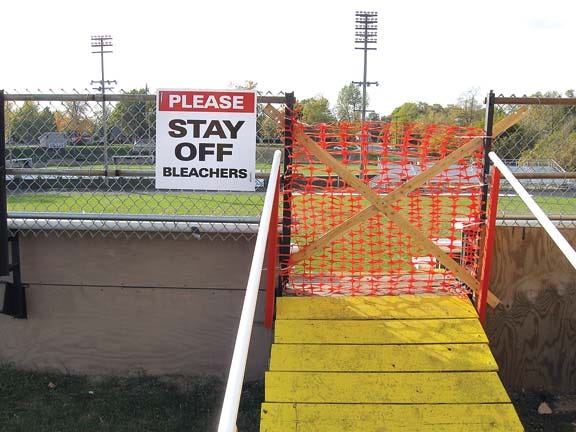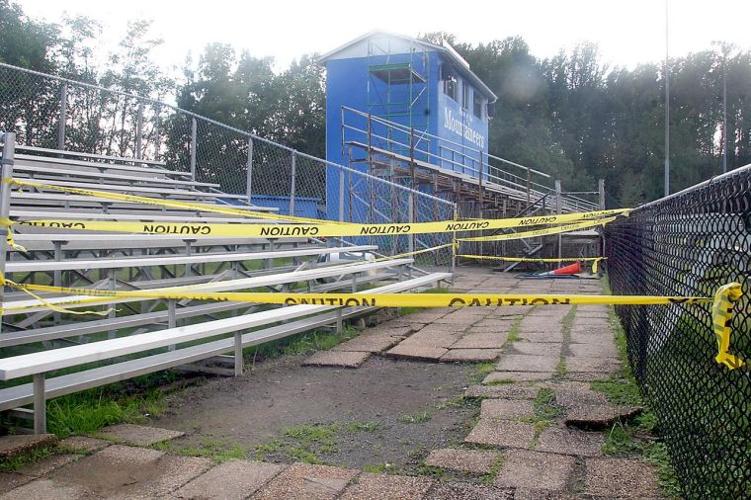 Image: Daily Telegraph
Image: Daily Telegraph
When we think about the word “condemned”, we often think of derelict properties and barely standing buildings on the outskirts of town. In addition to these commonly conjured images, many bleachers get condemned across Canada and the United States each and every year.
With aging schools and equipment, and especially with equipment located outdoors, degredation is a problem that is difficult to avoid. With time and continued exposure to the elements, even aluminum bleachers are subject to breaking down in one way or another. It’s important to keep an eye on your bleachers and the understructure on which they are built.
With many wooden bleachers still in operation today, in these cases one only has to look at the decking to determine if they should be serviced. It can, however, become much more difficult to assess the condition of an aluminum bleacher without a closer inspection. Below are just a few of the most common reasons bleachers become condemned and how that can negatively affect your facility.
Code Violations
In the United States, all standard bleacher models above three rows must be equipped with rear and side guardrails, aisle options and handrails in all aisles. A quick look at any bleacher is all one would need to figure out if the bleachers are code compliant and therefore safe for operation.
We also see many older bleachers that contain large gaps in the decking and other areas that can cause serious safety concerns. Current regulations dictate that there should be a gap of no more than 4” in diameter to keep children safe while bleachers are in use. With non-compliant seating structures however, these types of accidents involving small children have and do continue to occur.

Image: Don Richeson | Madison Eagle
Deteriorating Understructure
Although most bleacher planks nowadays are made of aluminum, the understructure of outdoor bleachers contains a fair bit of steel beams, nuts and bolts. As with anything that is exposed to the outdoor elements throughout the year, these parts are subject to corrosion and can become broken and worn down over time. This is perhaps one of the most common reasons for bleachers not only becoming condemned, but is also the leading cause of injury in bleacher mishaps.
Smooth Operation
Ease of operation pertains specifically to retractable or telescopic bleachers which are often located indoors. These bleachers are equipped with either a motorized or a manual operation. Over time, these units can become difficult to open or close or no longer perform smoothly or safely. The risk these outdated bleachers pose to staff and students should not be overlooked. If your bleacher is seized or is beginning to be difficult to operate, be sure to have it inspected or replaced as soon as possible.
These are the most common problems that can lead to bleachers becoming unsafe for use. But how do these challenges ultimately affect the facility as a whole? There are a few important reasons why a facility manager or operator should want to take steps to avoid this at all costs.
Disrupts Upcoming Events
We cannot count the number of times we have received phone calls from distressed school boards and other facilities about their bleachers that have failed a recent inspection and who need them for an upcoming event. Be it the school’s homecoming celebration or the kickoff of the football season, these facilities are left high and dry for events because of the delay in getting their bleachers inspected at routine intervals.
It Reflects Poorly on Management
In addition to canceling key events throughout the year, seeing a bleacher that was in regular use suddenly taped off does not reflect well on your facility or on those who operate it.
Save yourself the frustration and make your students, parents and community members feel safe and cared for by getting ahead with preventative inspection and maintenance to ensure school and sporting events never get canceled or postponed.
.png)
